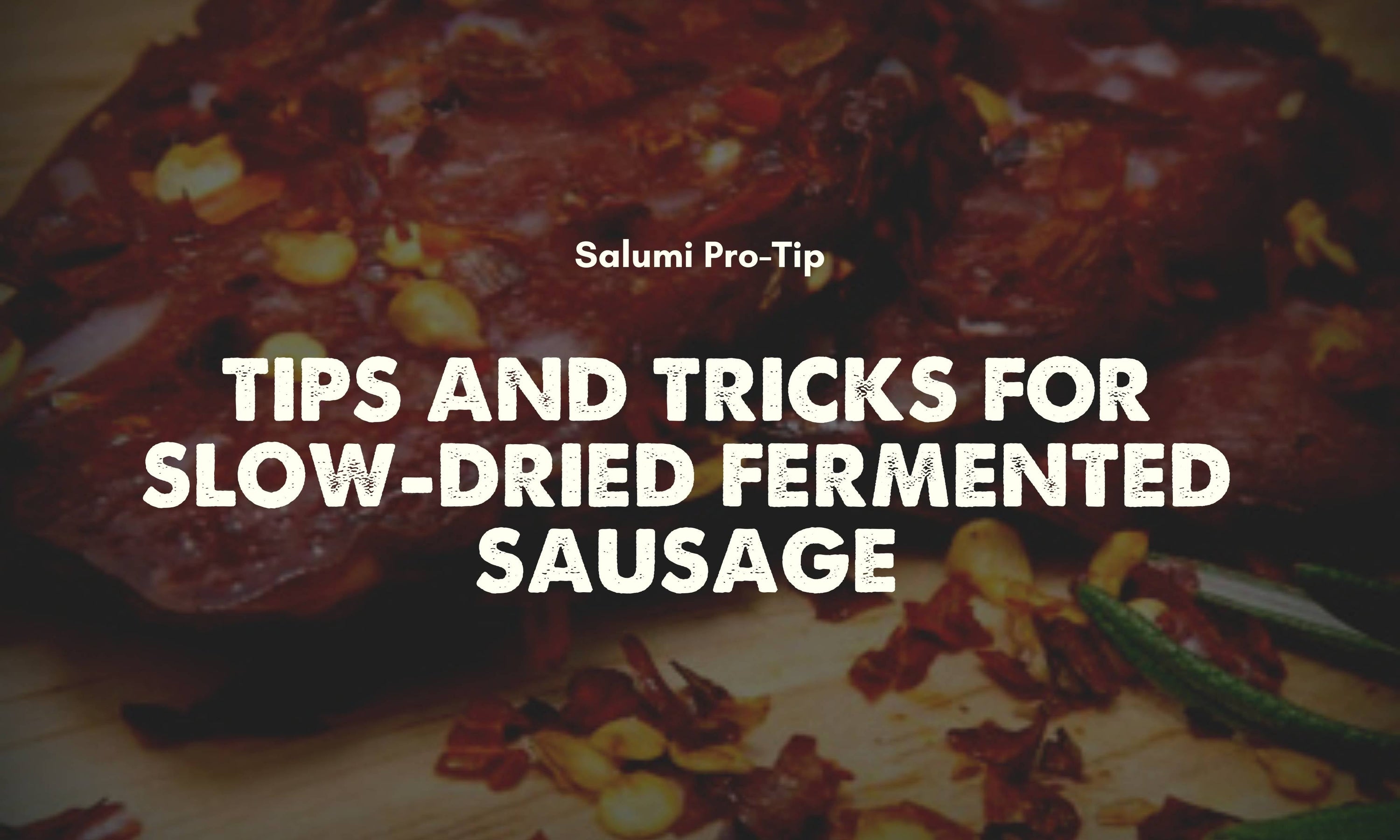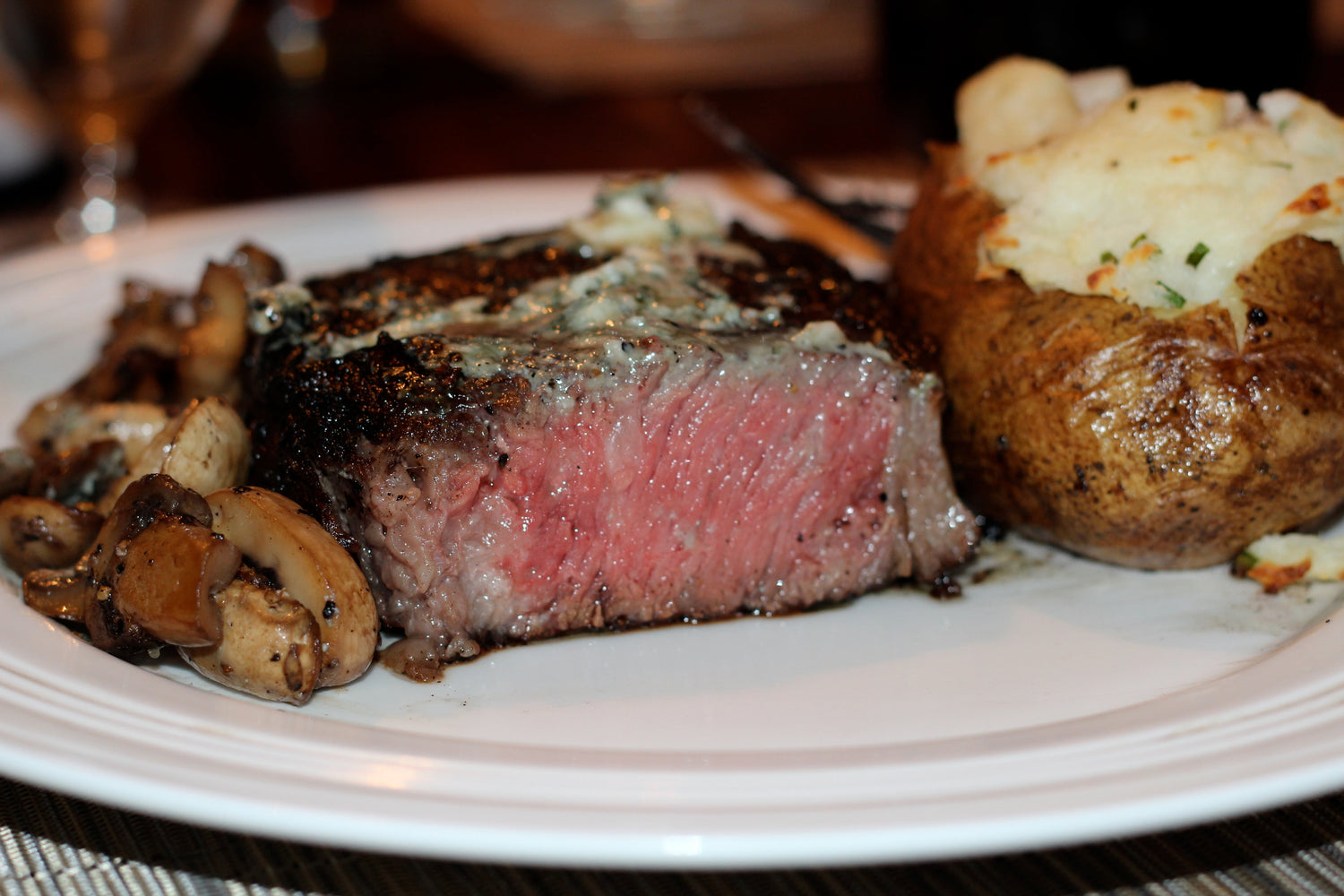Making traditional fermented dry sausage is a labor of love. UMAi Dry® makes it easier to do at home with no need for complicated fermentation chambers or curing cabinets.
When making fermented dry sausage, there are a couple of significant difference from regular cooked sausage making.
These are the basic guidelines to follow:
1. Make sure you have a course, cold grind.
2. Distribute the starter culture and dextrose solution evenly through the grind.
3. Blend spices, kosher salt, and #2 curing salt thoroughly into the meat mixture.
4. Stuff with a dedicated vertical stuffer. (Never stuff with a mixer attachment--it will ruin the texture).
Start with Cold Meat and Keep it Cold
This is probably the most important thing of all. That crispy cold grind gives you the necessary particle definition for evenly mixing the sausage ingredients. It also provides the necessary "space" for air to encourage robust fermentation AND even, effective drying. Lastly, if you want those pretty stained glass picture perfect slices, make sure you preserve this course texture from grind through stuffing.
Large Grinding Plate Size
The size of the grinding plate determines the texture and drying pattern of the finished sausage. The larger grind results in more even - and faster - drying.
When we bite into a bologna or a hot dog, we can't see the particles. There is no distinct texture of the meat that was used to make the product. Bologna starts out as a creamy paste or sometimes a liquid that is then cooked to a solid.
A dry-cured sausage like a dry salami is not cooked or mashed, so the particles of meat retain their character and texture.
Those clear particles also ensure besst drying because the moisture from inside the sausage has an easier time migrating through a larger particle maze than a tighter small particle maze, thereby drying more evenly.
Protected Fermentation at Room Temperature
With the UMAi Dry method, we recommend Bactoferm T-PSX Starter Culture because it ferments reliably at room temperature within 24 to 72 hours--no fussing with curing chambers and humidity levels.
Stuffed chubs of sausage should be placed in a space that is relatively humid and does not have any direct airflow blowing on the fermenting chubs for 24-72 hours. the protected environment ensures a cozy, non-drying environment. We suggest putting a "DO NOT USE" sign on the oven, and ferment in that cozy space protected from breezes. You can even place a pan of water in the bottom of the oven to support optimal fermentation.
During fermentation, the starter culture will "eat" the powdered dextrose, multiply and ferment the meat. The pH will drop into the range of 5, providing an additional food safety barrier, and giving it a tangy flavor. Be generous with powdered dextrose, and with starter culture.
You will generally notice a "blush" or slight reddening of the meat as it ferments. This will be more obvious with spice blends that contain more red spices, and very subtle with spice blends that do not.
Starter culture needs moisture to work. If the outside of the sausage begins to dry too quickly during fermentation, the starter culture will not be able to ferment the meat that is on the outside of the chub. The result will be an uneven drying pattern and a hard rind on the outside.
To achieve the traditional flavor, you need to successfully ferment the sausage to lower the pH. To accomplish this, the grind must be well-defined, the starter culture well-distributed, and the meat stuffed to preserve the particle definition. Never ferment for longer than 72 hours before transferring to the fridge to begin the drying process.




